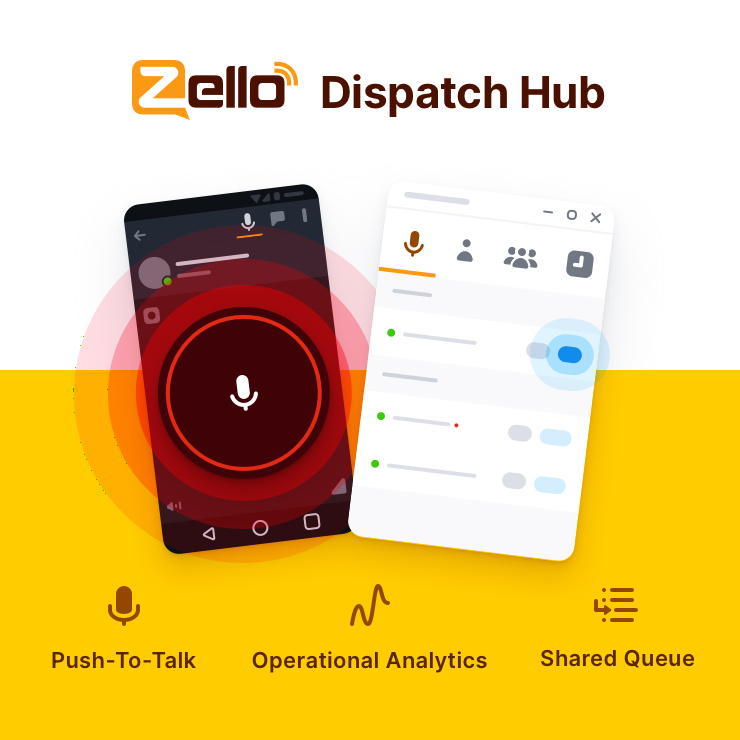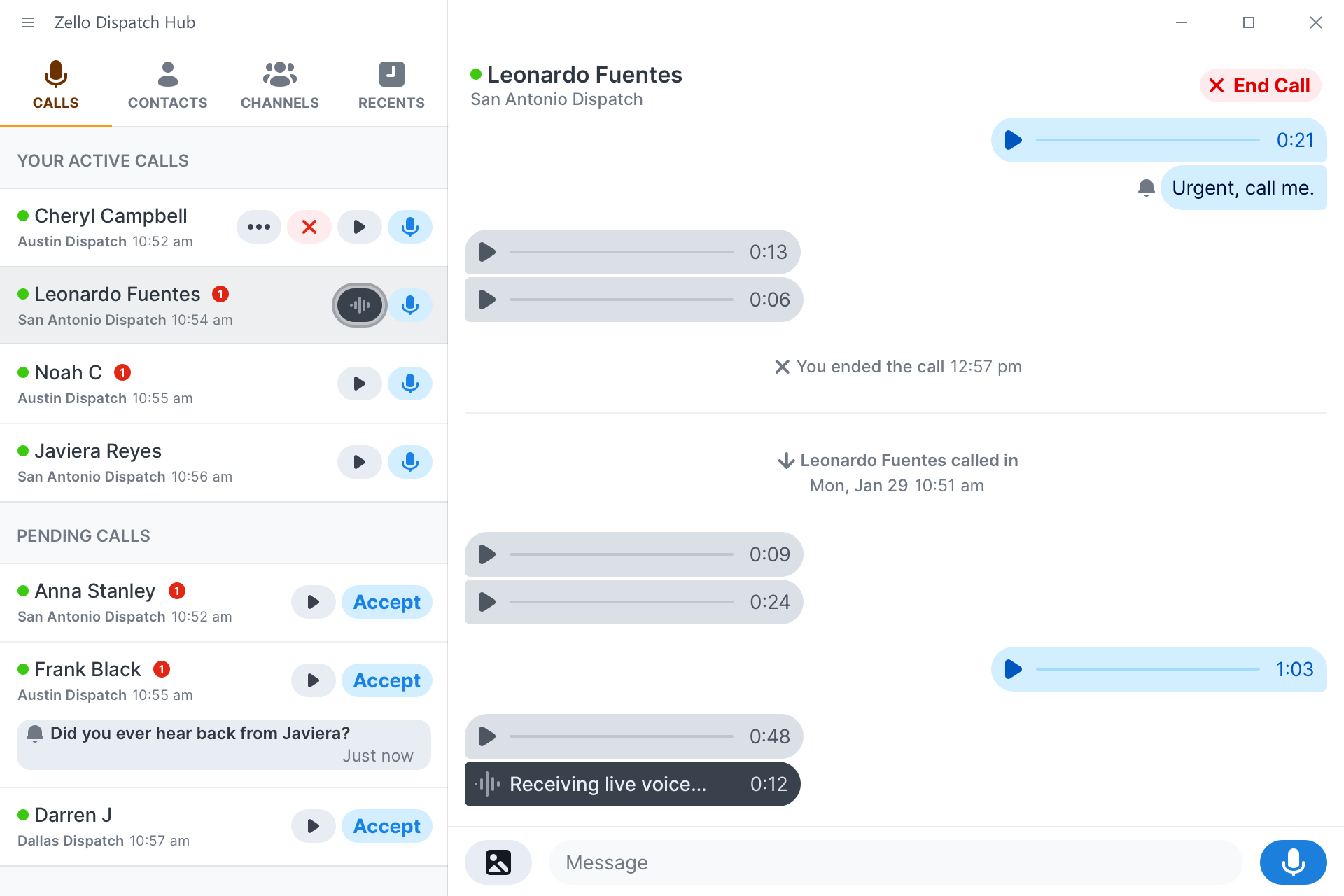The developer of a push-to-talk voice messaging service that enables communication and collaboration for workers, teams, and businesses has increased its construction materials fleet offerings. Through Dispatch Hub, Zello modernizes dispatcher-driver communications with push-to-talk technology, dispatcher workload sharing, call queuing, location tracking and message replay.

The full release of Dispatch Hub, announced at World of Concrete 2021, follows program testing in LafargeHolcim operating companies. Among construction materials producers, LafargeHolcim, Cemex USA, Knife River Corp., Martin Marietta Materials and Silvi Group are early adopters of the charter Zello service, whose functionality has been thoroughly tested among drivers of rideshare leader Uber. Zello replaces a traditional radio with any smartphone or tablet—extending the communication range to anywhere with Wi-Fi or cellular data service. Leveraging that capability, Dispatch Hub enables dispatchers and drivers to communicate in near real-time over long distances, often in dynamic operating environments.
By placing dispatch operators and drivers’ calls in a queue, Zello officials note, Dispatch Hub enables a more streamlined and less stressful communication workflow: Dispatchers can prioritize calls as a team, distribute call load, and focus on one message at a time. Drivers receive fast, reliable, one-on-one replies to their messages so they can focus on the road and the customer. And, companies can operate better as Zello analytics pinpoint call wait times, consistent problem areas, plus real-time map and traffic data to help raise dispatch center performance, achieve cost savings and realize better return on technology investment.
“The world of drivers and dispatch operators involves a constant state of movement, multi- tasking, and navigating unpredictable situations. Drivers are primarily occupied with driving and traffic safety, while dispatchers have to track schedules, field customer requests, monitor three to four different software platforms, and serve as a lifeline for a fleet of drivers on the road, providing guidance and information to assist them in their mission,” says Zello CEO Bill Moore. “Great dispatchers need effective tools to prevent overload, distribute call loads across a team, and ensure drivers are answered quickly—even at the busiest times. Our new Dispatch Hub feature streamlines and simplifies this entire process.”
With legacy push-to-talk communications such as radio, driver-dispatcher communications are unreliable and unsafe, he contends. Incoming calls often disappear into a void, with drivers waiting several minutes for a decision from dispatch while the truck is parked and not making money. Poor two-way radio connectivity also leads to similar delays and safety issues when drivers cannot connect to communicate about accidents or on-site hazards.
Similarly, Zello notes, dispatchers often cannot keep up with call volume, missing calls and trying to make sense of simultaneous radio communications. Teamwork likewise suffers while frustrations and inefficiencies mount as dispatchers lack the ability to distribute the workload. Companies with inadequate dispatch operations are unable to identify under-resourced teams, long call wait times and consistent issues on specific routes. Dispatch Hub tackles these issues and equips dispatchers serve a broader set of drivers. — Zello Inc., Austin, Texas, www.zello.com/product/dispatch-hub

DISPATCH HUB DEPLOYMENT: MISSED CALLS ELIMINATED, CHATTER CURTAILED
Dispatch Hub went live at World of Concrete 2021 after Zello programmers tailored their technology for charter construction materials fleets. The new service offers:
- Shared Call Pool, enabling dispatchers to become a high-performance relay team, working together with ease to reply quickly and reliably every time.
- Operational Analytics, providing visibility into team inefficiencies to continuously optimize operations.
- One-to-One Calling for Dispatchers, ensuring individual communication with any driver, without talking over other drivers—reducing radio fatigue and eliminating extra chatter on a channel.
- Message Replay, allowing for the replay of any incoming message, ensuring there’s no such thing as a missed call.
- Broadcast Messages, a feature combining the power of radio broadcast with the efficiency of one-to-one communication. Emergency alerts and other company- or team-wide announcements can be broadcast to a large group.
- Call Received Alerts, informing drivers that their message has been received so that they can focus on the road.
- Live Voice, creating clearer, safer and more reliable communication with high definition audio quality in dispatcher and driver exchanges. Drivers can also send images to dispatchers.
Realtime Maps, providing helpful context so dispatchers can assist drivers without needing to ask for location.
